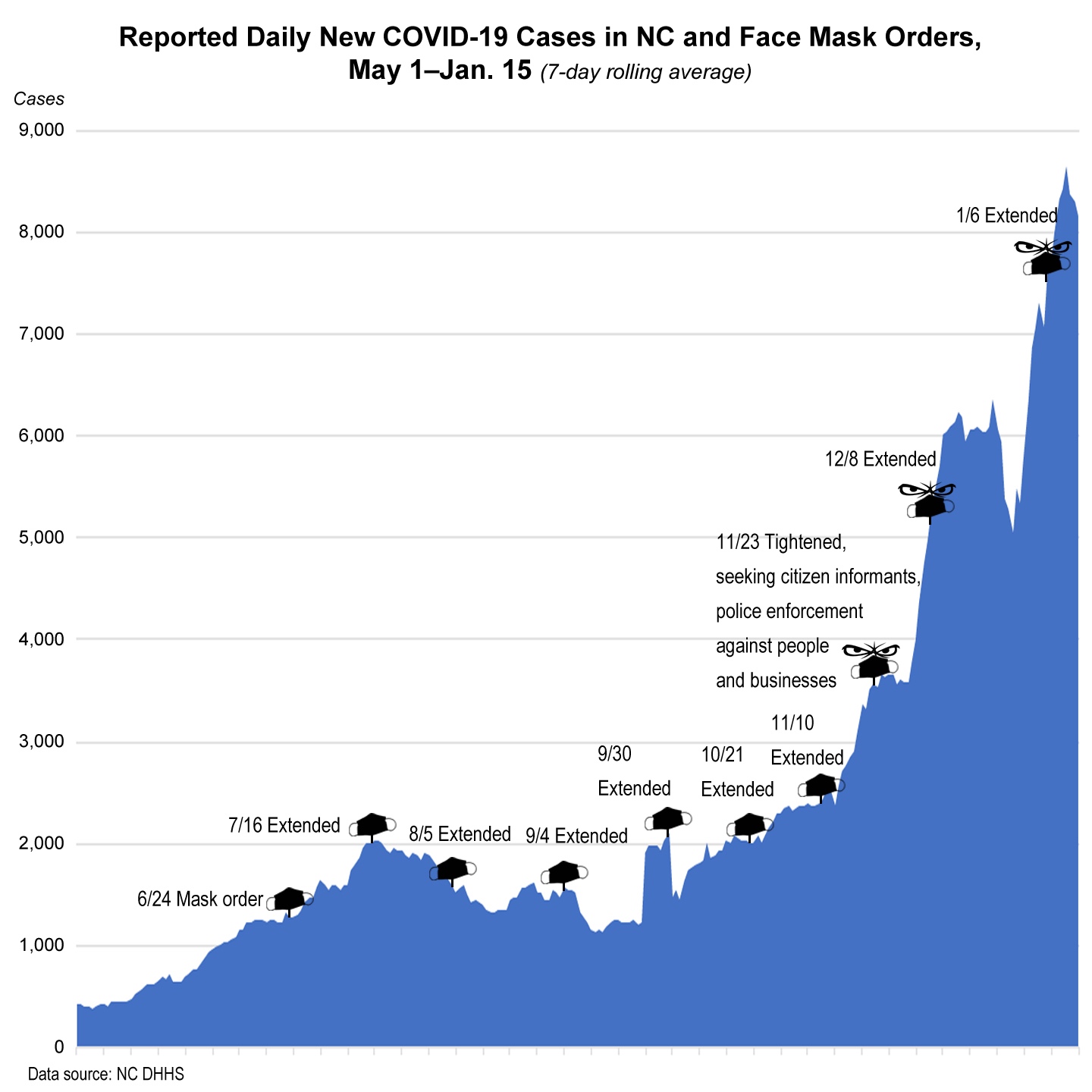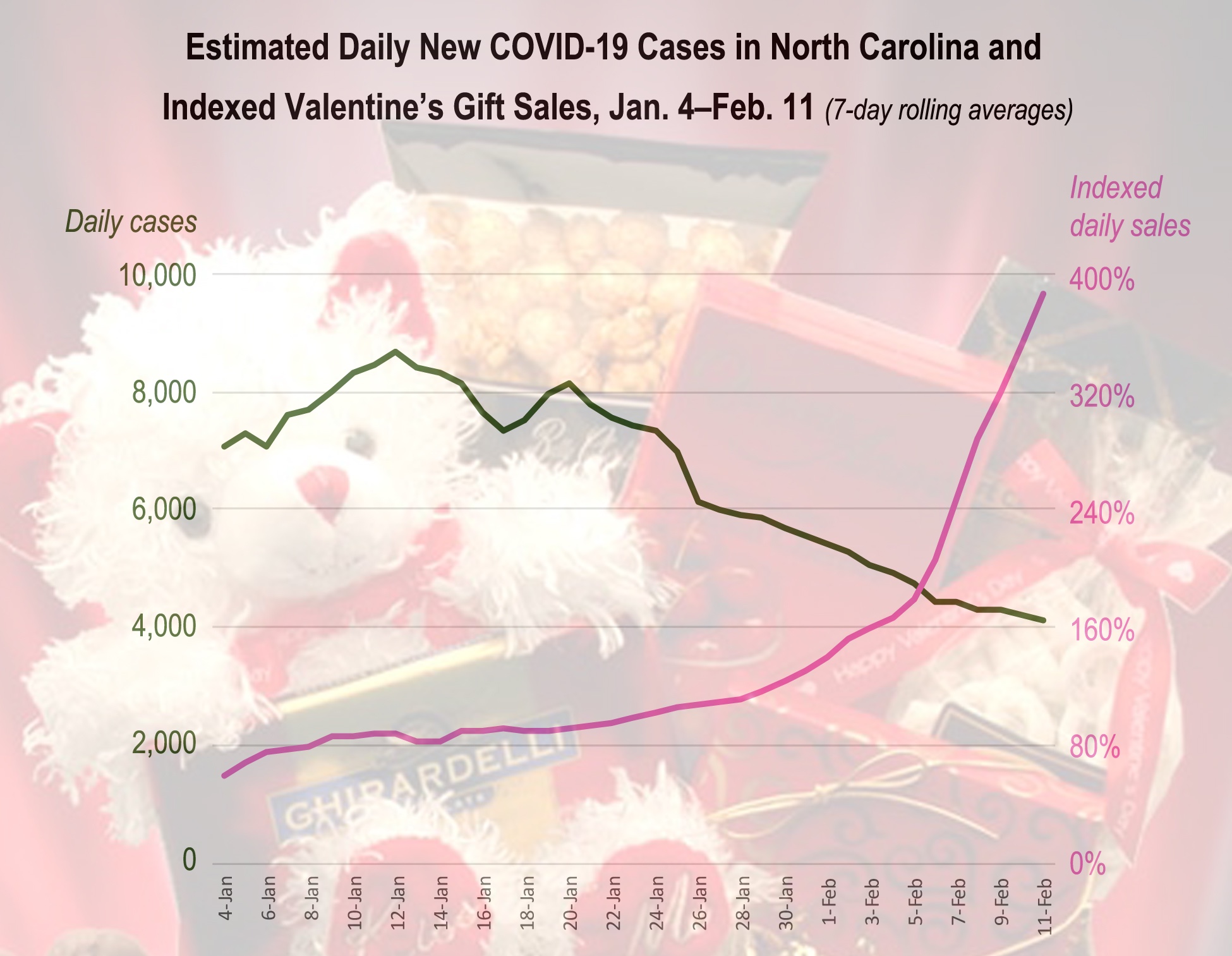Note: Word is some people missed the satirical point of this piece. Guys, I straight-up called it a spurious correlation. C’mon.
For nearly a year now, we’ve been treated with assertions to the general effect that SARS-CoV-2 responds to central planning. Whatever the government intervention — lockdown, curfew, closing certain bars while others can be open, and especially forcing face masks on healthy people — it immediately attracts the same dedicated chorus of people declaring it works on the ontological basis of that it exists.
You would think that rising cases numbers all during the fall/winter cold & flu season would cause them to rethink, but instead they offer up a version of the Elephant Repellant fallacy. To them, the utterly predictable spike in cases isn’t seasonal and therefore happening despite the masks, curfew, lockdowns, etc., no; instead, we just don’t see all the infections those government restrictions have very effectively kept away.
Here’s a recent graph of daily COVID-19 cases in North Carolina through Jan. 15 (click here for a discussion of it):

On the back end of cold & flu season, new cases have started to fall, but we “know” we can’t — mustn’t! — ascribe this decline to seasonality. So we need a different explanation.
I think I’ve come up with a better alternative explanation than the masks and other restrictions. This spurious correlation fits the data much better, and it’s nice, too: LOVE. Specifically, love as measured by spending on Valentine’s Day gifts (candy, flowers, teddy bears, etc.).
I’ve noticed that the more people are spending money on Valentine’s gifts, the fewer new cases of COVID-19 there are. Here is a graph of daily new cases against a graph of estimated daily Valentine’s gift sales (both graphs are smoothed to seven-day rolling averages, and the Valentine’s gift sales are indexed relative to other spending):

Who’d have guessed that Madame Eglentyne may have had the cure for Covid all along? Amor vincit omnia!


